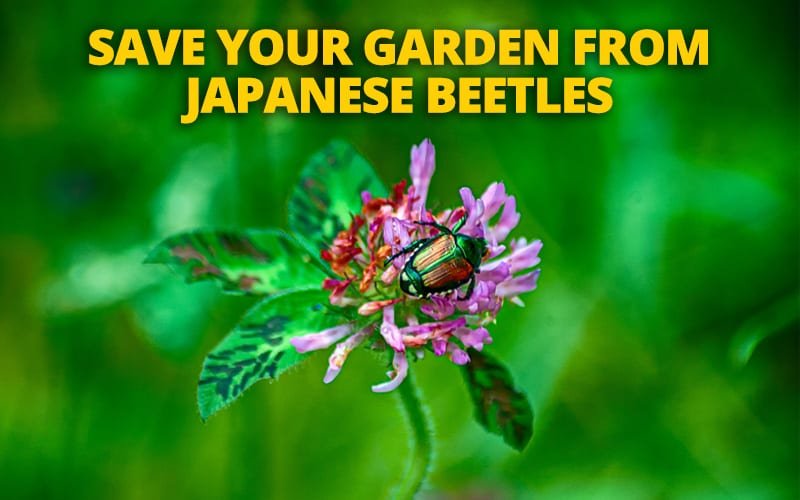
How to Fight Off Those Pesky Japanese Beetles
Japanese beetles have become a bit of an issue this summer in Colorado. They are quick to breed and have the power to destroy your garden at the blink of an eye. There are very few garden pests that can match the destructive powers of the Japanese beetle. When they are immature (or grubs), they feast on grass roots and leave behind brown, dying lawns. When they have matured, they begin feasting on leaves and flowers, leaving your plants weak and skeleton-like. They are known to feast on over 300 species of plants, impacting everything from home gardens to agricultural crops. Let Bloem Landscaping help you fight off Japanese beetles.
About Japanese Beetles:
Originally from Japan, as the name suggests, Japanese beetles first made it to the US in 1916. Since their Japanese native predators are not found on US soil, it is difficult to keep their growing numbers in check. They are currently the Country’s most widespread turf-grass pests, found in over 70% of the U.S.
Japanese beetles are approximately 1/2 inch long with shiny, bronze wings and metallic green bodies and tufts of white, dot-like tufts of hair along their rear and sides.. They usually start to appear in late spring to midsummer when first emerging from the ground and then flying to nearby areas where they tend to target stressed plants. They live thirty to forty-five days where they do most of their damage above ground. Female beetles tunnel a few inches into the ground in healthy, sunny, well maintained lawns, during a 2-3 week period and each can lay up to 60 eggs.
Japanese Beetle Damage:
The beetle eggs hatch during midsummer and the grubs stay close to the soil’s surface to feed on the grass roots. As the grubs mature into the final stages of semi-transparent larvae, the damage to your lawn has been done and you will see random patches of brown dry lawn and peeled back turf rolls.
As the temperatures drop in the fall and winter, the grubs move deeper into the soil and when Spring arrives again, they move back toward the surfaceto continue feeding.. Mature beetles emerge a few weeks later and the cycle starts all over again.
How to Fight Off Japanese Beetles and Grubs
Proper treatment and timing can help you fight off these pests successfully. Now is the time (mid-late summer) when you should focus your attention on the grubs. Studies have shown that neem oil (“antifeedant”), can help deter the grubs from feeding and can also harm them if they eat it. If they do injest it, it can be passed down to the eggs, which in turn will prevent the eggs from hatching.
Because Japanese beetles love hot sunny days, it is best to prepare your garden for these especially hot days ahead of time by adding some shade to your garden. Consider adding row covers to protect your plants during the six to eight week feeding period that begins in the late Spring and early Summer. Don’t uses these if your crops require pollination, however.
As soon as you see one beetle, you can be sure there are others. If you see signs of leaf skeletonization, it is a clue that your garden is infested and it is time to take action in trying to get rid of them. You can hand pick them off your plants and place them in a solution of 1 TB liquid dishwashing detergent and water (which will drown them). Or, you can call Bloem Landscaping for help at 303-733-3793!
Consider planting Japanese beetle deterring plants such as Dogwood trees, Poppies, Chrysanthemums, Begonias, Pansies and/or Lilac trees.
For more information about Japanese Beetles, visit https://en.wikipedia.org/wiki/Japanese_beetle , https://www.almanac.com/pest/japanese-beetles or https://howigetridof.com/how-to-get-rid-of-japanese-beetles/
If you have any questions about protecting your garden from these pesky little beetles, or if you would like us to help you with your garden in any way, please contact Bloem Landscaping here.
